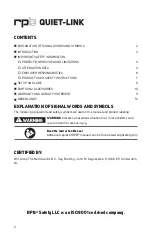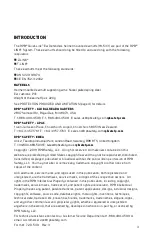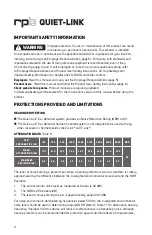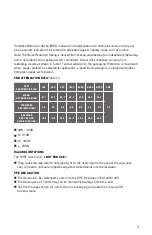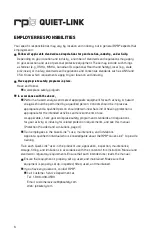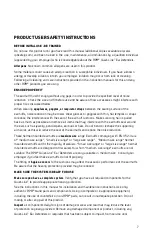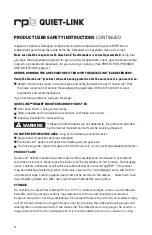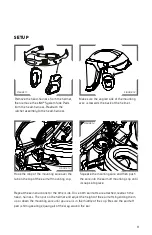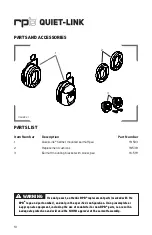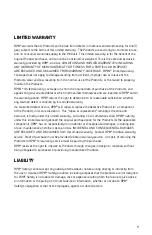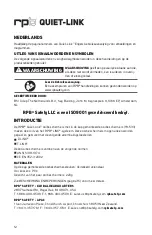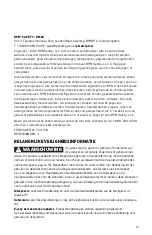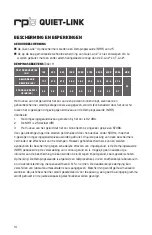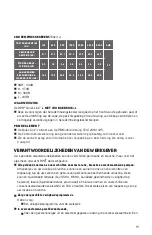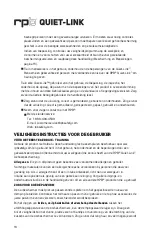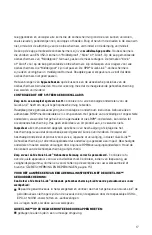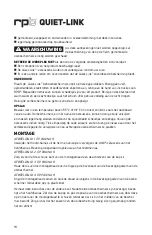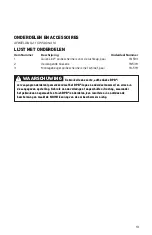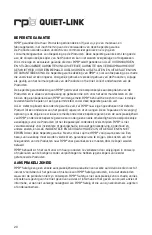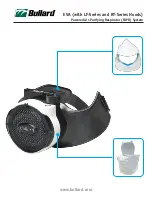
5
the Noise Reduction Rating (NRR) is based on the attenuation of continuous noise and may not
be an accurate indicator of the protection attainable against impulse noise, such as gunfire.
Note: The Noise Reduction Rating is derived from testing procedures at an independent laboratory
and in accordance to acceptable A.N.S.I. standards. Actual noise reduction can vary from
laboratory results as shown in Table 1.1 and as labelled on the packaging. Protection is maximized
when: proper protector is selected for application, a good training program is utilized and proper
fitting techniques are followed.
SNR ATTENUATION DATA
Table 1.2
TEST
FREQUENCIES (Hz)
125
250
500
1000
2000
4000
8000
SNR
MEAN
ATTENUATION (dB)
21.1
21.3
29.1
39.3
37.9
42.3
42.3
33
STANDARD
DEVIATION (dB)
2.9
1.8
2.6
2.8
2.5
3.4
2.2
ASSUMED
PROTECTION
VALUE (APV) (dB)
18.2
19.5
26.5
36.5
35.4
38.9
40.0
SNR - 33dB
H - 37dB
M - 30dB
L - 23DB
HAZARD LIMITATIONS
The RPB
®
Quiet-Link
™
is
NOT FOR USE
if:
They cause the respirator to not properly fit on the users head or they cause the cape, face
seal, or hood to not seal and potentially allow contaminants into the respirator.
PPE REGULATION
The Quiet-Link
™
Ear Defenders conform to the PPE Regulation (EU) 2016/425.
The Declaration of Conformity can be found at rpbsafety.com/resources/
See the Storage section for information on packaging and protection required for
transportation.


